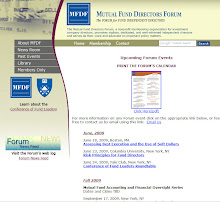In connection with her confirmation hearings, Mary Schapiro, now SEC Chairman, provided written answers to twenty questions posed by Senator Carl Levin (D-MI). Sen. Levin recently has made his questions and Schapiro's answers available on his website. The topics of Sen. Levin's questions ranged widely from the wisdom of the Commodity Futures Modernization Act of 2000 (CFMA) to resolving the conflicts of interest affecting credit rating agencies and her thoughts on mark-to-market accounting, the PCAOB, Sarbanes-Oxley, and executive compensation.
Though Ms. Schapiro's answers to all twenty of Sen. Levin's questions make very enlightening reading, here are some exerpts of that Q & A:
Question 3: What are your views on whether and how SEC oversight be strengthened with respect to:
Question 5: What is your view of the relationship between the SEC and federal banking agencies with respect to banks that buy and sell securities? How can this relationship be improved?
Question 6: What lessons should be learned from the recent collapse of the markets for asset-backed securities, collateralized debt obligations (CDOs), structured investment vehicles (SIVs), and auction-rate securities? Should the SEC attempt to restore the markets for these products? Should the SEC make distinctions between these categories of products and, if so, how and why?
The full text of Sen. Levin's questions, and Mary Schapiro's answers is available at: http://levin.senate.gov/newsroom/supporting/2009/PSI.SchapiroResponses.012209.pdf
Though Ms. Schapiro's answers to all twenty of Sen. Levin's questions make very enlightening reading, here are some exerpts of that Q & A:
Question 3: What are your views on whether and how SEC oversight be strengthened with respect to:
- the holding companies of securities firms?
- hedge funds?
- companies that are not broker-dealers, but buy and sell financial swaps and other products, like AIG Financial Products?
Response: I believe that all systemically important financial institutions need to be regulated. I would specifically endorse the registration of hedge funds.
Response: It’s important that all the regulators in our system work collaboratively in ensuring that investors are protected and that the markets are operating soundly. Moving forward, we need to close the gaps in our regulatory system, a system that is too stove-piped allowing determined market actors to avoid oversight. As we work to reform the financial regulatory architecture this should be a priority.
Response: The biggest lesson from these market collapses is that we cannot allow financially important products that have a massive impact on our markets and our economy to operate in our system without high standards of oversight, transparency, and accountability. As Chair of the SEC, I will move aggressively with my fellow Commissioners and working with members of Congress to close the gaps in our regulatory structure and bring these markets under control.
Question 10: The SEC recently issued a report supporting the existing mark-to-market valuation rules, but recommending some improvements. What is your view of the current mark-to-market valuation rules?
Question 16: Chairman Cox has indicated that he thinks the PCAOB should stop inspecting auditing firms in other countries and instead delegate its inspection authority to foreign oversight bodies where those firms are located. Do you believe the Sarbanes-Oxley Act allows the SEC to make this delegation? If confirmed, would you try to advance such a proposal?
Response: We know that certain banks were not presenting investors with the full picture of their financial health, utilizing off-balance sheet vehicles and other accounting methods. This was a disservice to investors as the integrity of the numbers is critical to their making smart investment decisions and to the smooth functioning of our markets. While there are a lot of different views on whether mark-to-market accounting contributed to this crisis, my personal view is that it was not a significant factor. As Chair, I will read the recent SEC report on this matter fully, talk with other regulators, and get their views as we move forward.
Question 16: Chairman Cox has indicated that he thinks the PCAOB should stop inspecting auditing firms in other countries and instead delegate its inspection authority to foreign oversight bodies where those firms are located. Do you believe the Sarbanes-Oxley Act allows the SEC to make this delegation? If confirmed, would you try to advance such a proposal?
Response: No, I do not; and no, I will not.
The full text of Sen. Levin's questions, and Mary Schapiro's answers is available at: http://levin.senate.gov/newsroom/supporting/2009/PSI.SchapiroResponses.012209.pdf





